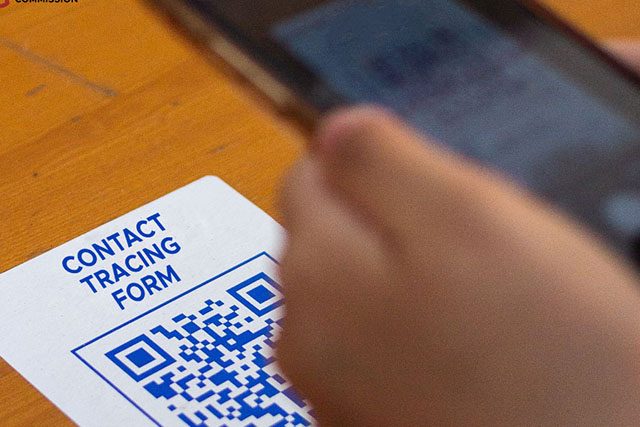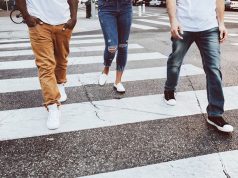After the government forwent the use of face shields outside, calls for a more secure and safer means of inputting details on contact tracing forms in establishments were raised online.
President Rodrigo Duterte on the first part of his pre-recorded address aired on Wednesday evening said that the wearing of the plastic gear will only be required in areas under the “3Cs” category: crowded, closed, and those with close contact.
“The limitation is to use face shields in the 3Cs: closed facilities such as hospitals, crowded areas such as a crowded room and where there is close contact or when people are physically close to each other,” he said in Filipino.
Last June, treatment czar and Health Undersecretary Leopold Vega said that face shields may be removed outdoors but the Palace quickly clarified that it remains mandatory regardless of the setting.
Experts have previously noted that face shields are not overall effective in stopping aerosol or airborne transmission of the virus causing COVID-19 and that face mask remains the ultimate protection.
Last December, the World Health Organization said that the virus can spread through the air in poorly ventilated and crowded indoor settings.
Following Duterte’s announcement, some Filipinos hoped that the next to be scrapped off in the country’s COVID-19 guidelines are manual contact tracing forms in establishments in which people’s information are laid out in one paper.
“Mas okay pa ‘yung mga QR codes like sa Valenzuela, Quezon, Pasig. Ewan ko ba ba’t ‘di nalang sila gumawa ng isang buong system na may sub-systems per city or district,” another Redditor commented.
“Lately, I’ve noticed most people write down anything at all and the security guards don’t bother checking the temperature readings. I think we’re all tired from the whole process,” wrote another Reddit user.
“Anyone can just take a photo of the sheet from their phone,” a different Redditor said.
“This just shows how weak PH is in utilizing technology and compliance with Data Privacy Act,” another Redditor claimed.
Back when QR Codes and digital contact tracing were not yet enforced, establishments made do with the manual style of contact tracing where they have to write down their information on paper.
Others compile this in one logbook where there is a potential for others to see and take note of their information.
Some have alleged that they have begun to receive “spam” messages after signing up for the forms during the COVID-19 pandemic.
“There’s also a bunch of scams texting me I won something and I should call or e-mail the texted back. My number has been with me for 2 years without getting any spam messages through SMS but after all these sign-up thing started, it’s a bunch of who (you’s),” a Reddit user claimed.
“Eto yata ‘yung rason ba’t ako nakaka-receive ng mga insurance offer texts lately, hayup ‘yan,” another Filipino claimed.
The government introduced digital contact tracing early last year through its StaySafe.ph mobile application in a bid to reduce physical contact and instances of people sharing pens in manually filling out forms in light of the threat of the virus.
But information technology experts, including a former information and communications technology chief, have raised alarm on the app’s data privacy features.
Local government units eventually established their own systems and tapped local developers to create paperless contact tracing applications.
Last January, an official of DICT said that the data being collected in StaySafe remains in the hands of a private technology firm.
Health Secretary Francisco Duque III recently admitted, however, that the data from the government-approved app has “almost no impact” on contact tracing efforts.
He said that he would “echo the concerns to the DICT during the next [pandemic task force meeting].”
Contact tracing is considered by the WHO as a “key strategy for interrupting chains of transmission of SARS-CoV-2 and reducing COVID-19-associated mortality.”
“Contact tracing can break the chains of transmission through the rapid identification, isolation and clinical care of cases, and providing supported quarantine of contacts, meaning that virus transmission can be stopped,” it said on its website.










